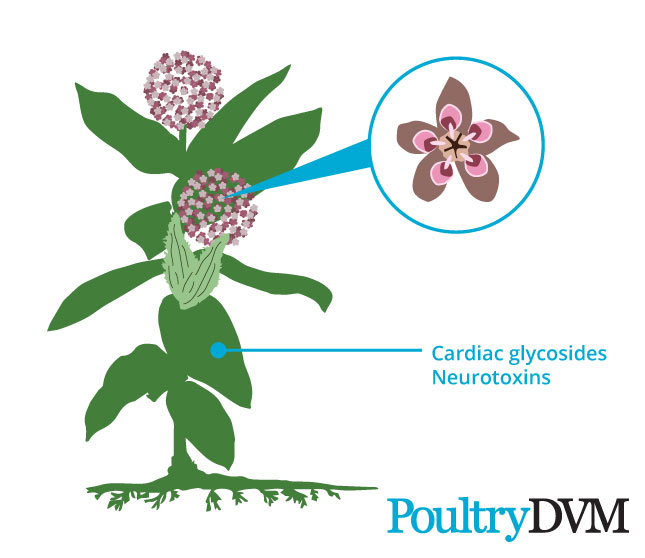Milkweed (
Asclepias syriaca ) is an erect-stemmed, herbaceous perennial plant. Milkweed stems and leaves contain a thick, white, milky sap throughout the plant which seeps out when the plant is damaged.
Milkweed produces clusters of tiny green to purple tinted flowers which bloom from May to August. Flowers are arranged in clusters at the top of the plant. It's fruits are spindle-shaped follicles covered with silky white hairs. The seed pods are often used in dried flower arrangements.
Toxic components
All parts of the milkweed plant contains cardiac glycosides, resinoids and alkaloids. Poultry need only consume 0.005 to 2% of their body weight to be poisoned.
